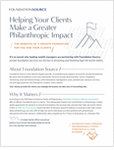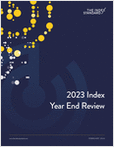A couple of years ago, I arranged to purchase an eight-week old beagle for my wife’s birthday. She named him Wally. Actually, she named him Wally about four decades ago when she first dreamed of having a beagle named Wally. Once Wally got his land legs, I soon found him doing the thing all dogs do. For no apparent reason, he would chase his tail. Everyone in the family thought it was so cute. Incredibly naïve, but cute.
Believe it or not, people who study these things call it “dog compulsive behavior.” This is similar to the human “obsessive compulsive behavior.” If we’re to believe a recent study, one of the primary examples of obsessive compulsive behavior in humans is their uncanny ability to consistently chase investment performance (see, “Why 401k Investors Chase Performance – and How to Prevent It,” FiduciaryNews.com, March 5).
We can attribute this unhelpful behavior to a couple of reasons. First, quite simply, there’s greed. Despite all the plaintive warnings required by the SEC, too many investors — including ERISA plan sponsors — genuinely believe past performance guarantees future performance. How else do you explain all those sophisticates taken in by Madoff?
Besides greed, though, is a common behavioral sin. This one’s called “recency.” It’s a bias that pervades our culture. It’s why many people think Joe Montana is a better quarterback than Otto Graham. It’s why the average teenager goes gaga over Justin Timberlake but offers only a blank stare at the mention of Frank Sinatra. It’s why today’s politicians get their names on buildings formerly named after founding fathers. All of us place a greater value at things we’ve experienced recently. This generates a recency bias. And this, in turn, often leads to bad decisions.








 March 07, 2013 at 07:53 AM
March 07, 2013 at 07:53 AM










